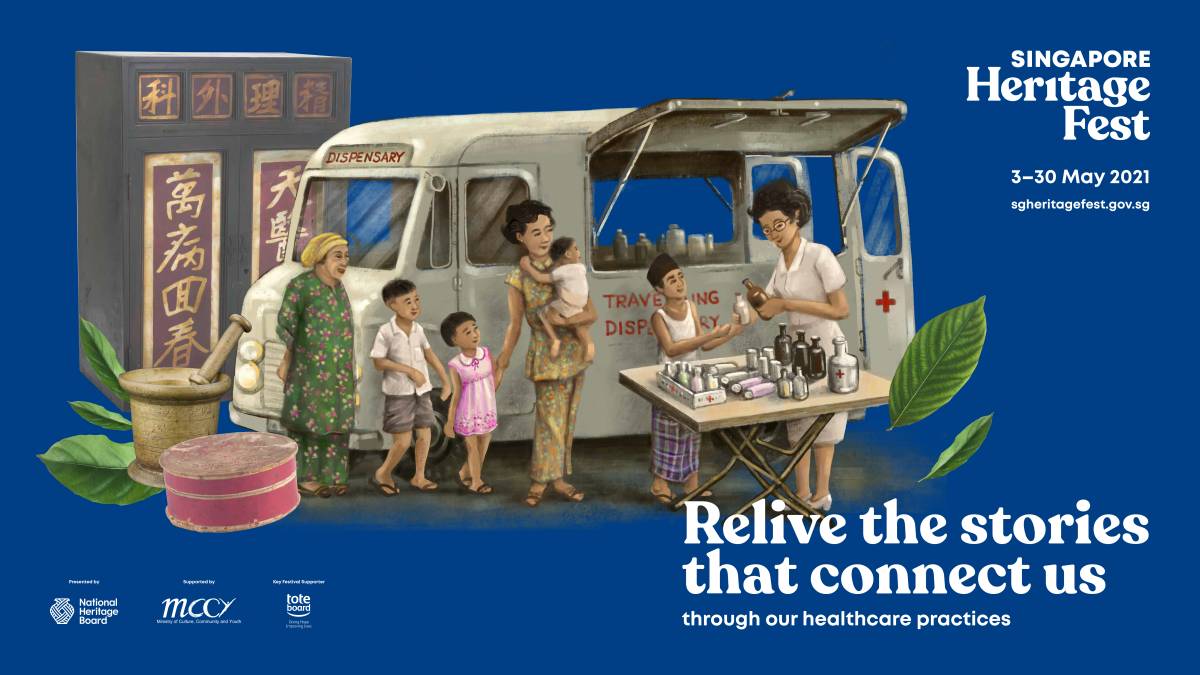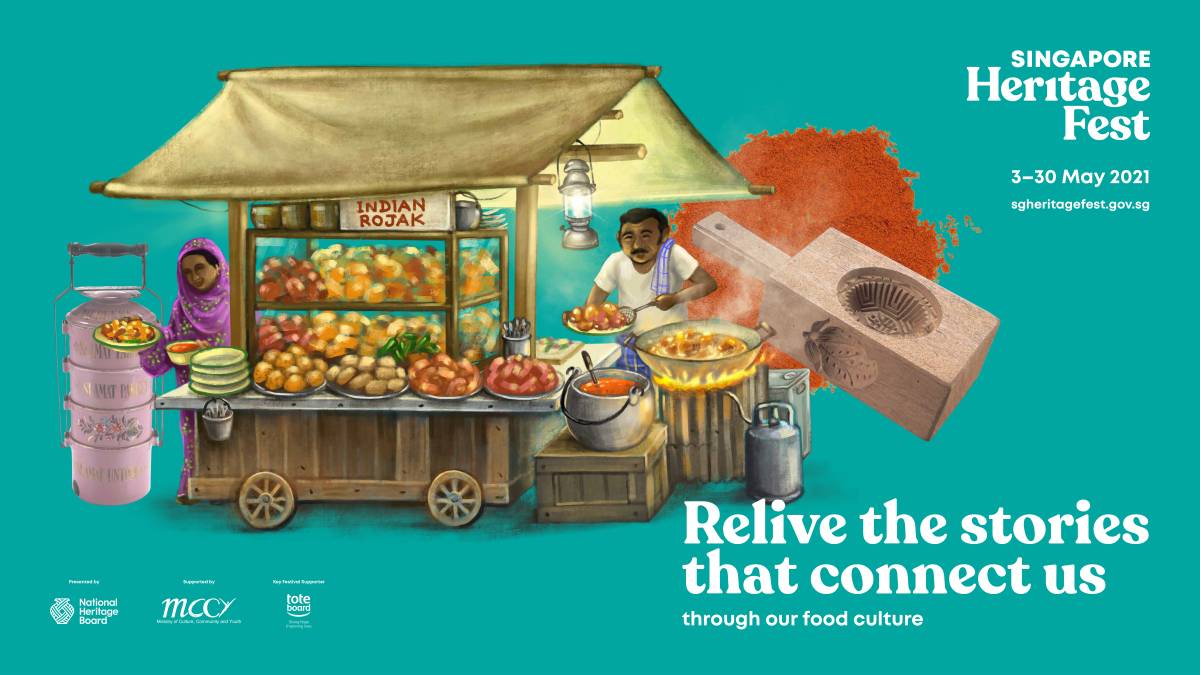RELIVE THE STORIES OF SINGAPORE’S PAST AT SINGAPORE HERITAGEFEST 2021
The festival returns for its 18th edition in a new hybrid format to uncover the lesser-known stories of our healthcare history and food heritage
(Singapore, 28 April 2021) The annual Singapore HeritageFest (SHF) returns in a refreshed, hybrid format to uncover lesser-known aspects of Singapore’s history. From May 3 to 30, 2021, members of the public can look forward to over 100 on-site and online programmes that invite Singaporeans from all walks of life to embark on an exploration of our healthcare history and food heritage, and to relive the stories that connect us.
Now into its 18th edition there will be differences to this year’s Heritagefest. The Covid-19 pandemic has taught us that we can expand our experiences through virtual meetings and videos, and after years of focussing on the history and culture of Singapore’s neighbourhoods and precincts SHF Festival Director David Chew says, "We are now going to have themes to reveal and remind Singaporeans about our past."
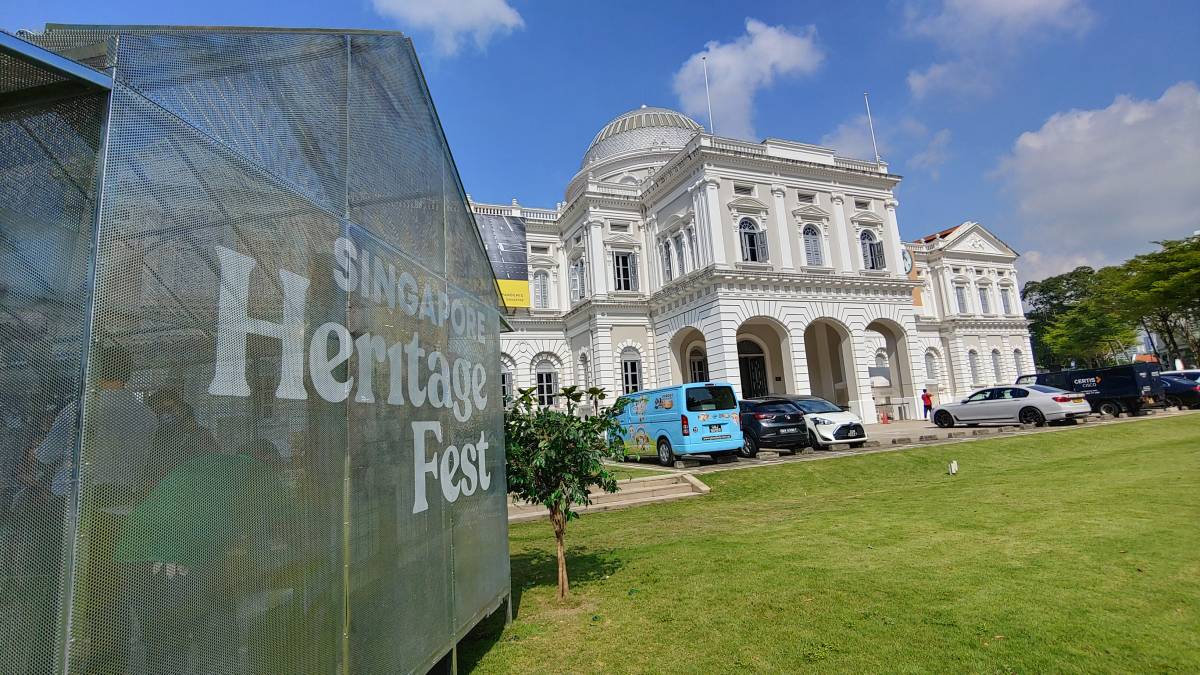
The National Museum of Singapore is only the starting point for delving into Singapore HeritageFest 2021
When I read that SHF 2021 will commemorate significant healthcare and food heritage milestones I thought, ‘that doesn’t sound very exciting’. When I heard presentations by five local companies about their products and history I thought, ‘that’s really interesting’. The passion of the presenters for what they are doing conveyed intrinsic qualities that brought them success. Hard work. A vision. The willingness to step away from the hand that life had dealt them into new spheres not only brought improved financials but the satisfaction of realizing a dream that could be passed down through generations.
 Discovering Singapore's Best Kept Secrets, Digital Tour of Old Changi Hospital by Jerome. Image credits to Ms Simone Lee
Discovering Singapore's Best Kept Secrets, Digital Tour of Old Changi Hospital by Jerome. Image credits to Ms Simone Lee
There are significant milestones that are being celebrated this year such as the 200th anniversary of Singapore General Hospital (SGH), the nation’s first hospital, and the inscription of our Hawker Culture on UNESCO’s Representative List of the Intangible Cultural Heritage of Humanity. This and more will step into the spotlight through a line-up of offerings that includes virtual tours, talks, photo essays and video documentaries, on-site tours and hands-on workshops. These programmes will reveal the stories behind the medical buildings of Singapore’s past, delve into the history and benefits of Eastern healing practices such as traditional Chinese medicine and Ayurveda, introduce participants to foods of different cultures, and more.
Director Chew added, “Singapore’s healthcare history and food heritage have a wealth of stories that are waiting to be discovered, from the humble beginnings of our very first hospital 200 years ago, to the fascinating breadth and depth of our culinary culture. Through SHF, we hope that Singaporeans can get to relive these stories that connect us, and also inspire them to take a more active role in safeguarding our shared heritage.”
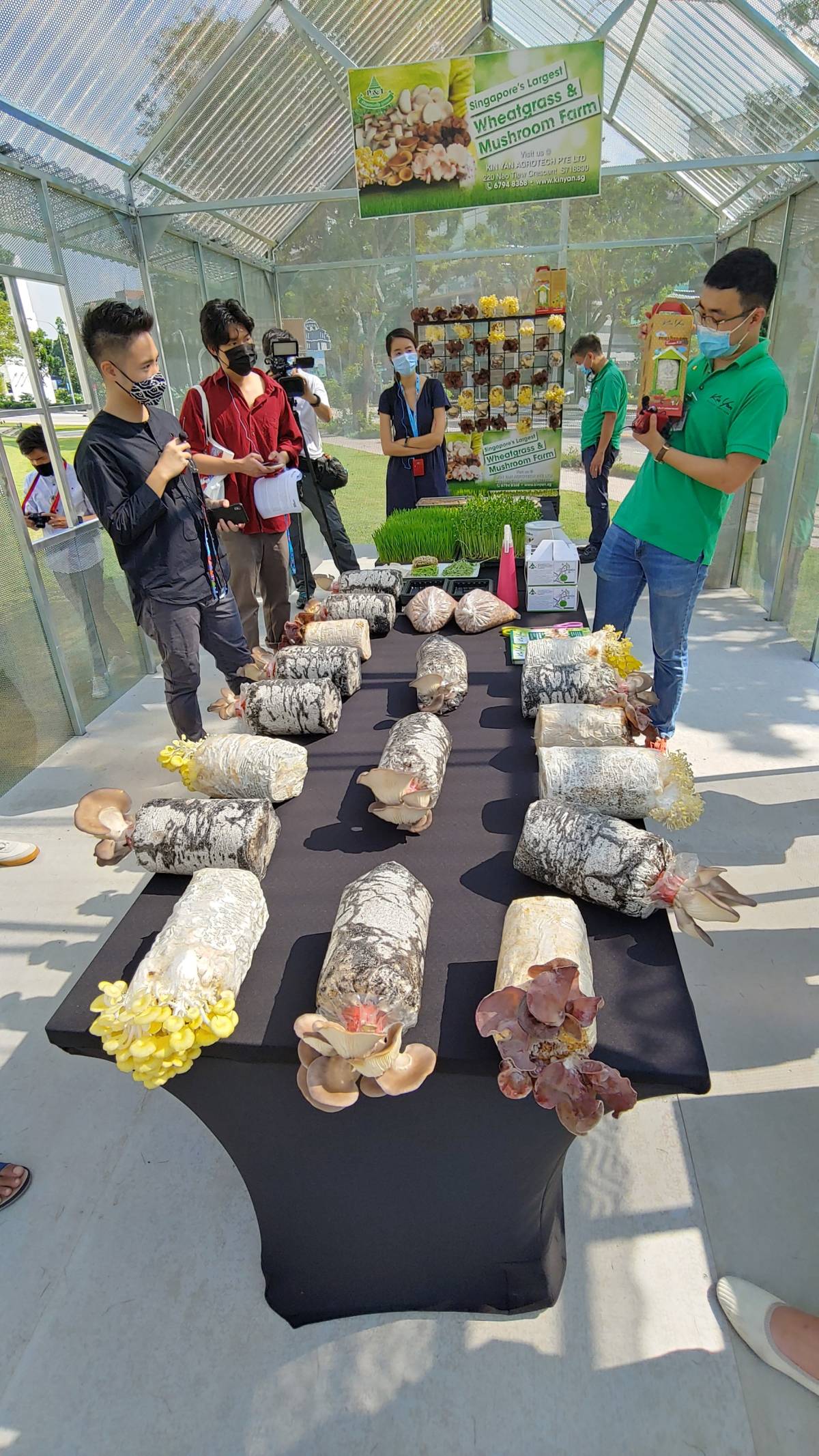
On the lawn of the National Museum of Singapore is a green house of Kin Yan Agrotech Pte Ltd Singapore’s largest commercial organic wheatgrass farm that produces and supplies such crops. Ng Zhen Khan noted that the company produces vegetables, farm products and health care products. Found within the farm are fresh edible cactuses, aloe vera and mushrooms, but here they are focussed on the mushroom growing kits.
The company started operations in 1997 when the original owners decided to grow organic wheatgrass as they believed in the plant's nutritional and restorative properties. Today, it has expanded the variety of crops to include many edible flora. One thing that remains unchanged is its commitment to nature, using only natural compost during the cultivation process and doing most of the manufacturing and packaging to minimise carbon footprint. You can take tours of the farm at Lim Chu Kang Agrotechnology Park, near Sungei Buloh Wetlands Reserve. www.kinyan.sg
Inside the Museum the media had the opportunity to learn the history of three companies and about the products they produce as well as the motivation behind collecting antiques and interesting items from our past.
Mr Ken Koh, Third Generation of Nanyang Sauce asked, “How long does it take make soy sauce?” he asked our uninformed group. “Nine months, the same amount of time to make a baby.” Creating a company making world-class products takes a little longer. Founded in 1959, Nanyang Sauce is steeped in tradition and has been synonymous with quality gourmet sauces over the years. A family secret recipe was passed down through generations that creates an Umami goodness with a rich aroma that is authentically Nanyang. Nanyang sauce is naturally hand-brewed from the best Non-GMO 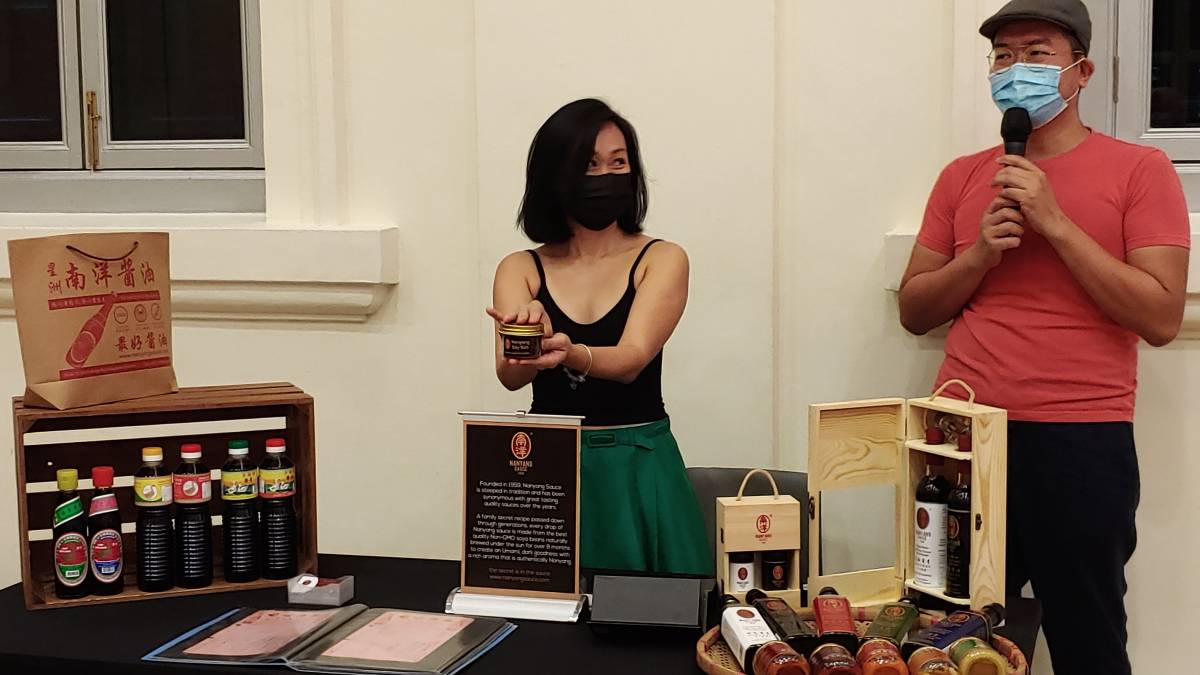
In 1942, Mr Tan Tiong How came to Singapore from China’s Fujian Province in search of a better life. He worked hard as a coolie, saved his wages and sent it home to provide for his family. To add flavour to the plain porridge he was eating, he started fermenting his own soy sauce using his grandmother's recipe. His soy sauce become popular among his friends as it reminded them of their homes. In 1951, Mr Tan decided to make quantities of soy sauce from home and sell it door to door from his tricycle. Over the years Mr Tan worked hard and in 1959 he was able to start a factory. He called it Nanyang Sauce Factory in gratitude of the new life he had found in Nanyang. The term refers to the Chinese population in Southeast Asia.
“I want to build on our family legacy and preserve our vanishing craft of brewing artisan soy sauce,” Mr Koh related. “Premium good ingredients make a difference, and we started a social initiative with farmers to grow organic soybeans so that we can achieve farm to table with the goal to brew the best soy sauce in the world." www.nanyangsauce.com
Jaya Spices, the city of Indian spices, started operations in 1990, but this story can be traced back to 1947, when Mr Ramanathan Chettiar set up shop in Singapore for the first time. He had brought with him a very specific skill set, the heralded art of mixing spices. Mr Chettiar was one of the pioneers of his generation, and his is the legacy that has been brought forward by his son, and now by his grandson.
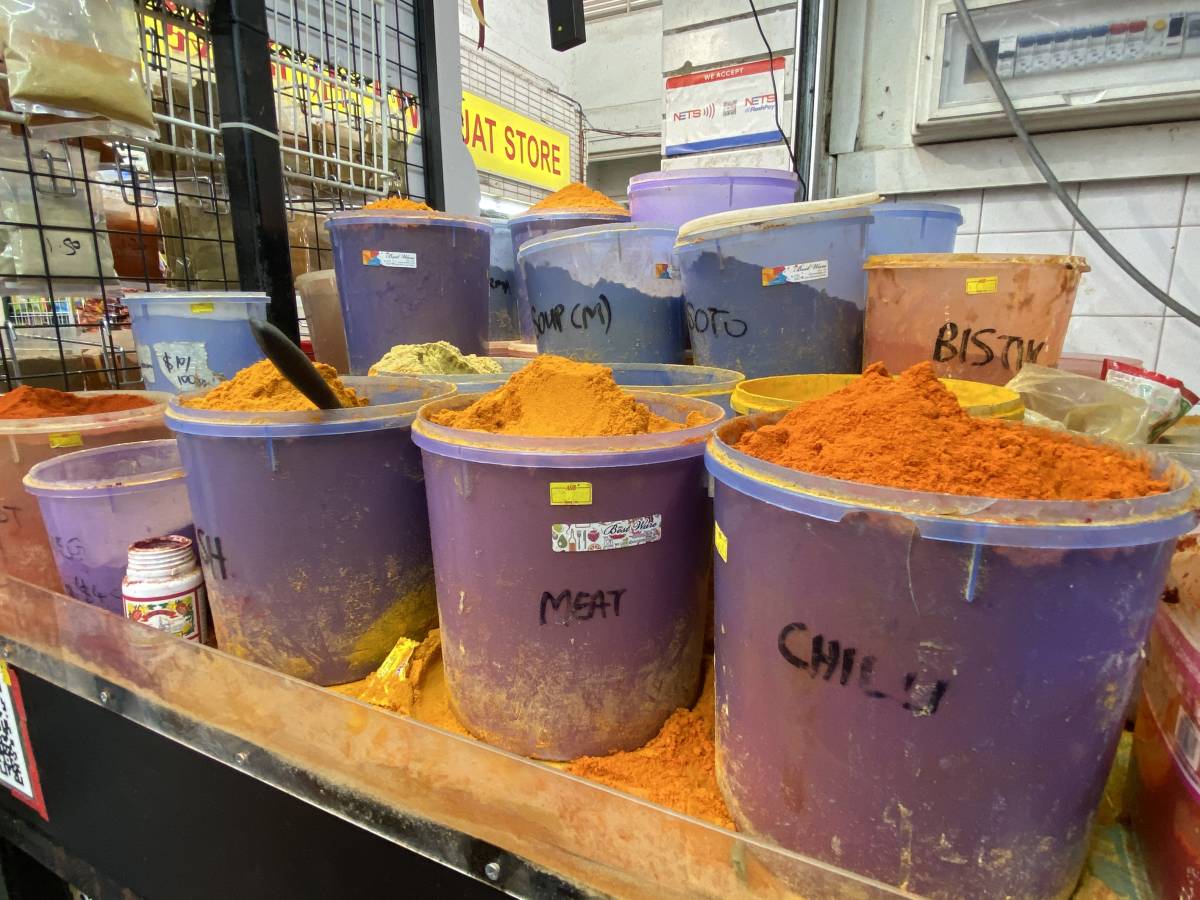
Spices In My Curry. Image credits to Jeya Spices
Through the generations their passion for creating and concocting fresh, aromatic spice mixes has not waned. In fact, its appeal to the masses has only steadily increased. Through steadfast commitment to sustain a satisfied customer base, they have attained a well-deserved reputation for delivering only the freshest and finest spice powders, such as turmeric, fennel, cumin and coriander.
Jeya Spices now provides many other groceries with a plethora of goods, from about 15 brands of basmati rice that cater to individual tastes, to an exhaustive array of dried fish that will awaken the nostalgia of, especially, their older consumers. Jaya Spices is a licensed dealer of cardamom by the Spices Board of India. Being a licensed dealer of the Spices Board, provides access to purchase the product first hand from the farmers as well as at auction, which is the first point of transacting cardamom.
Jeya Spices' Jeya Seelan states, “Our main objective is to take care of quality, accuracy and competency of our products. We exercise honesty, integrity and a straightforward attitude in our business. Our dedication to what we do keeps our clients obsessed with the real aroma of spices. We have had to adjust them over time as today's generation would find the dishes of earlier generations far too strong for them." jeyaspices.sg
Heng Foh Tong – Medical Hall – Authentic Herbs
Between them Madam Ng, her son Peter Lee and his wife Mdm Chye, have over a hundred years of experience with Traditional Chinese Medicine herbs. They have dedicated their lives to learning the wisdom of natural enhancement for the human body and believe in making it available to as many people as possible.
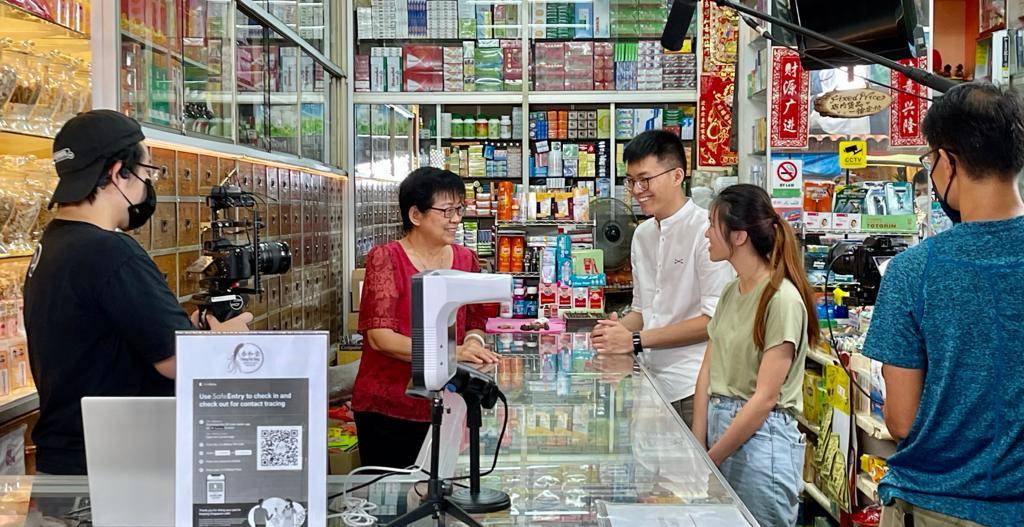
Open Business @ Heng Foh Tong. Image credits to Heng Foh Tong
Lee Chin Siong, Vice-president, Heng Foh Tong Medical Hall explained that their commitment to sharing the benefits of TCM has enabled them to build one of the most comprehensive collections of TCM herbs in Singapore and offer them at affordable prices. For three generations, the family has been faithfully serving the community. Initially they set out to help poor Chinese immigrants. Today, the company provides quality Traditional Chinese Medicine (TCM) herbs and necessities for residents from their storefront in Bukit Batok. hengfohtong.com
Collector Jamal Mohamad displayed his collection of Kris, the asymmetrical dagger with distinctive blade-patterning that originated in this region. He talked about the value of collecting that goes beyond the monetary value of the objects. “When you display your collection in your home it is an expression of your personality. People can immediately see what you are interested in. But you can get too absorbed with your collection.
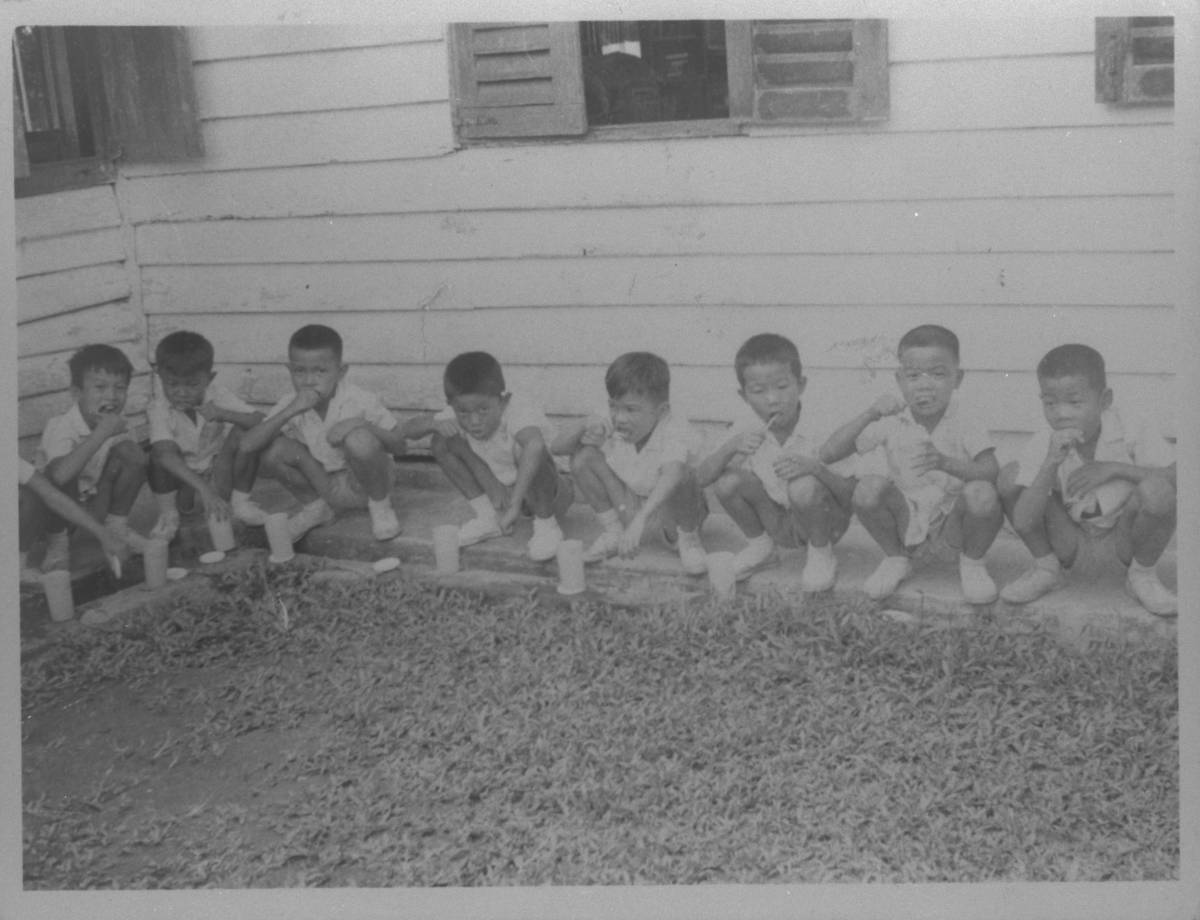
Brush, Brush, Brush Your Teeth. Image credits to Wigglepods Pte Ltd
An islandwide exploration of our shared history and heritage
The thematic approach of SHF 2021 differs from recent past editions of the festival, which focused on the heritage of specific neighbourhoods and precincts. This allows the Festival to move beyond the boundaries of the precincts to take a more holistic view of Singapore’s history and heritage, and to focus on national milestones that connect Singaporeans as a community. The refreshed format for 2021 will reveal tales of Singapore’s healthcare history and food heritage from all over the island. Some highlights include:
Tours of historic buildings and monuments that bear witness to Singapore’s medical history

Visit SGH to learn more about the three National Monuments that lie within its compound – the College of Medicine Building, Tan Teck Guan Building and Bowyer Block – and discover the roles they played during the Japanese Occupation, as well as the stories of the communities who worked there. Festival-goers will also be able to go on digital tours of the former Communicable Disease Centre at Moulmein Road, and the former St Andrew’s Mission Hospital for Women and Children on Kadayanallur Street to explore areas that are not normally publicly accessible, and discover the lesser-known facts about the buildings. For example, #DidYouKnow that the former hospital houses one of the oldest lifts in Singapore?
Interactive workshops at local heritage businesses
Enjoy a unique tasting session and workshop at local artisan soya sauce brewery Nanyang Sauce, and discover the difference between slowly fermented and factory-produced sauces, while also picking up tips on how to use different types of sauces in different dishes.
A closer look at the food heritage of the Bras Basah.Bugis precinct
Revel in the rich food culture of the Bras Basah.Bugis (BBB) precinct with a food trail that uncovers its hidden gems, and a three-part series of heartwarming short films, titled Behind Our Stalls, that chronicles some of the challenges hawkers faced due to the COVID-19 pandemic, and how they overcame them. Another highlight is a food-themed photowalk, in which participants can enjoy a professional photography session of food-related buildings, sites and significant eateries in the BBB precinct.
This Is What We Eat At Home – A Photo Exhibition
Mealtimes at home are not only a time to eat. They are spent creating memories together, with knowledge and social traditions passed down from one generation to the next. Through documenting the food they eat at home, six children and youth from Tak Takut Kids Club discover their family history and multicultural community heritage. With households that are helmed by working parents, single parents, and ailing grandparents, the families face challenges preserving cultural heritage, but continue to safeguard the value of shared family meals as one of the last bastions of family connections. Visitors can expect to experience a sensory-charged exhibition where they can view food photography, hear stories of self-discovery, learn about ingredients used in Burmese, Chinese, Malay, and South Indian food traditions, and bring useful recipes to try in their own home.
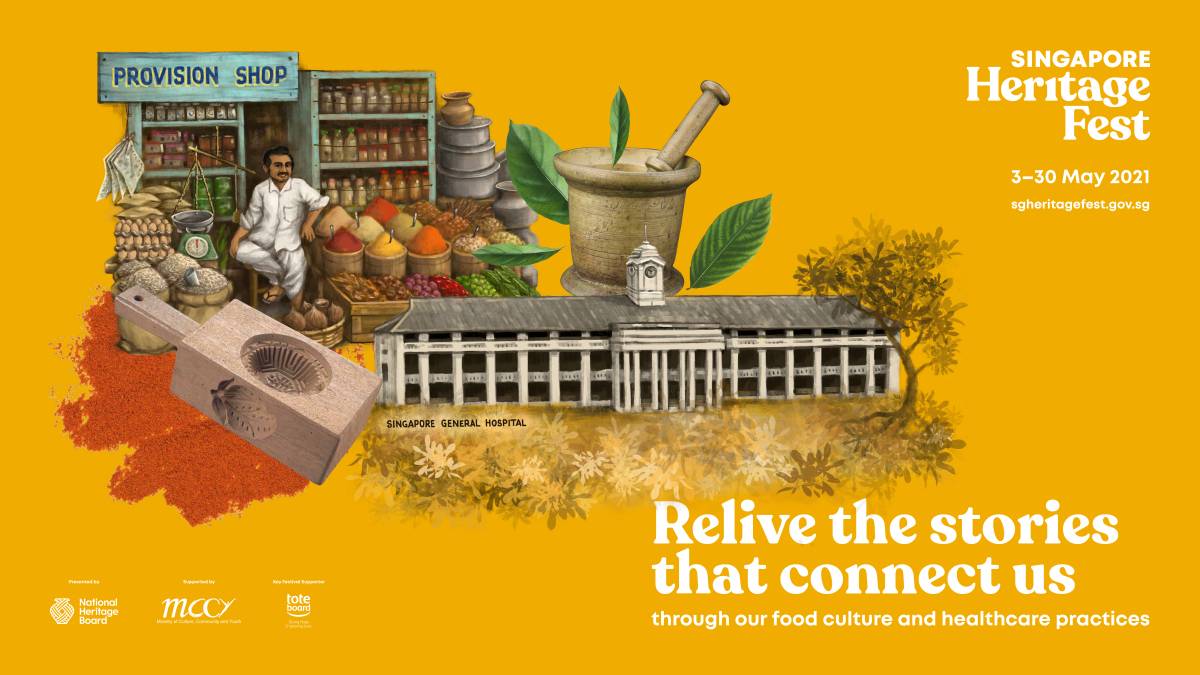
Evolution of Volunteering in the Healthcare Sector
In some cases, you might need strong muscles to help lift patients. On other occasions, you might simply need to be a good listener. Hear stories from healthcare volunteers from the Institute of Mental Health, Kwong Wai Shiu Hospital and Tan Tock Seng Hospital and find out what it takes to meet the needs of patients in this live digital dialogue session. The volunteers will also detail the challenges and rewarding experiences associated with volunteerism.
Cinema Reclaimed: Medicine & Modernity in Singapore Cinema
Enjoy an array of locally produced films that deal with the theme of medicine and modernity, as part of the inaugural edition of Cinema Reclaimed, a special collaboration between researchers Toh Hun Ping and Ben Slater. The film showcase will be accompanied by a virtual lecture by Mr Toh of SG Film Hunter and Mr Slater, author of Kinda Hot: The Making of Saint Jack in Singapore, who will examine how local films have addressed medical themes and in particular, used hospitals as locations, from the Malay studio era of the late 1940s to the present day

Other highlights
In addition to SHF 2021 programmes, this year’s festival will also feature HomeGround @ NMS, an art installation on the National Museum of Singapore’s front lawn. It is a contemporary interpretation of a traditional kampong house, taking inspiration from its most recognisable form and key architectural elements. Constructed entirely using one singular material, the perforated metal mesh is also a cheeky reference to the ubiquitous chicken coop cages often seen in kampongs.
The festival’s signature Ride & Discover programme, which reimagines MRT stations and trains as exhibition spaces, will also return this year to present stories of landmarks such as SGH and Maxwell Food Centre at the Outram Park, Novena, Bedok and Toa Payoh stations.
SHF 2021 programmes will be open for registration from 29 April 2021, 2:00pm. Members of the public may visit www.sgheritagefest.gov.sg/ for more information on the programmes.
ORDER HERE: fcowanmedia@gmail.com : Or go to Amazon: The Orange-Sofa: Unicorn Eyes: Walking Home: Singapore Circuit Breaker Zero Visibility - US$9.00 on line


